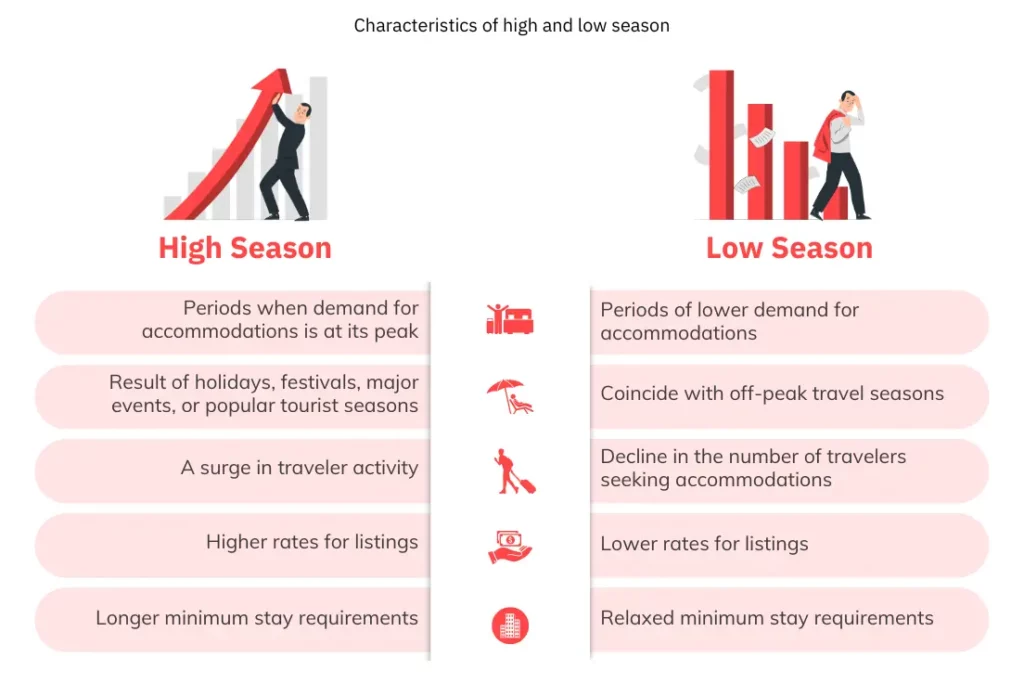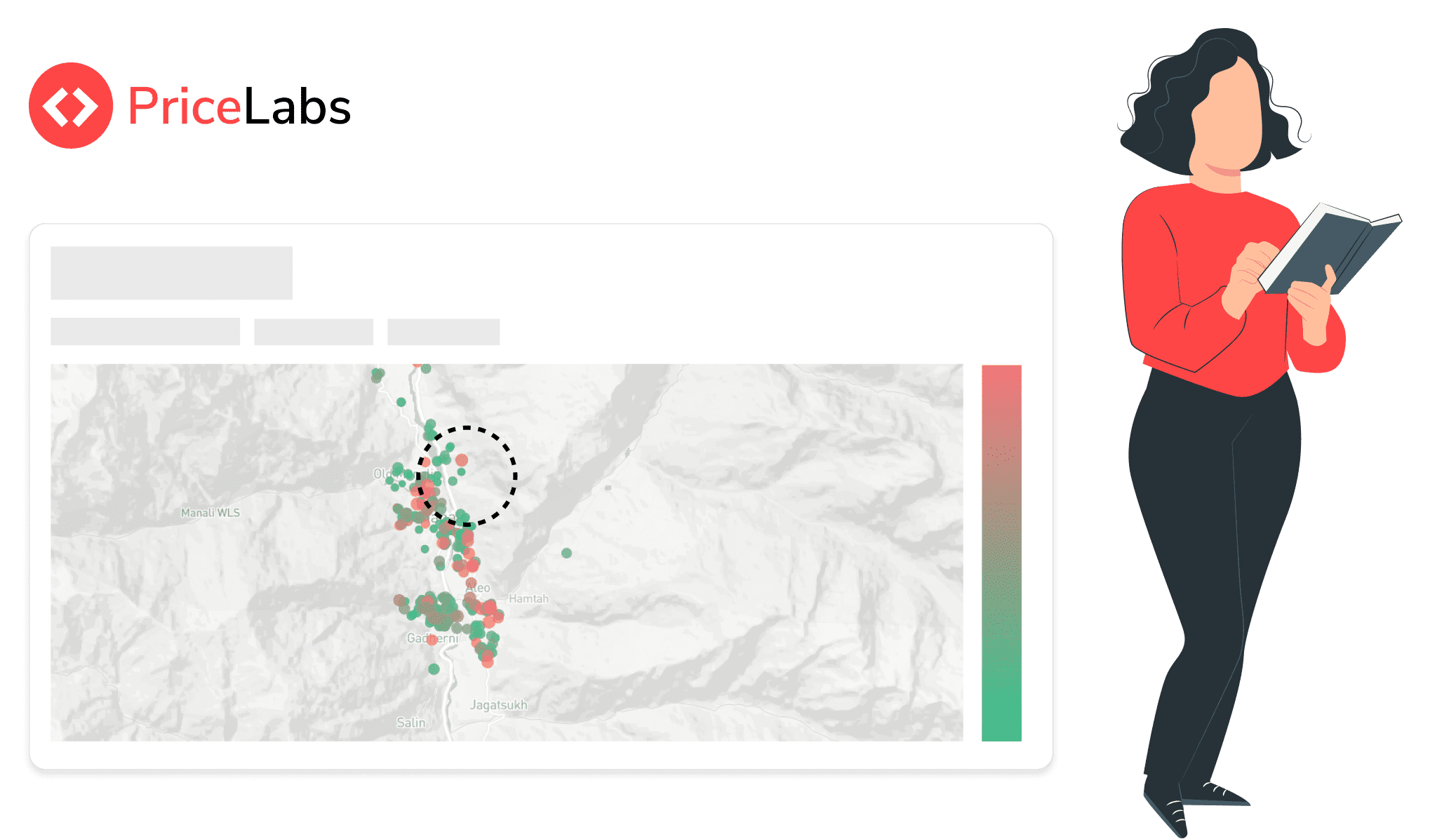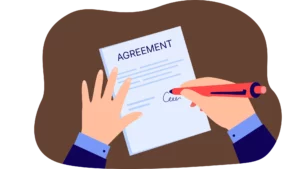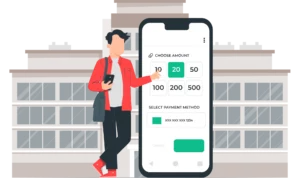Updated: October 30, 2024
How to price your vacation rental can be a challenging but significant question that owners and property managers wrestle with. Setting the right price can help you maximize your revenue, attract the right guests, and stay competitive in your market. However, does the right price have to align with the competition? Or should you price your rental according to your understanding of the market?
This article will walk you through how to strategically price your vacation rental compared to your competition, ensuring you make informed decisions that align with your financial goals. Let’s dive into the critical aspects of effective pricing, including adjusting for high and low-demand periods, utilizing dynamic pricing tools, and offering competitive advantages.
Understanding Market Dynamics: Peak vs. Low Demand Periods


High Demand Periods
In almost all markets, there are peak-demand days when the demand for vacation rentals skyrockets. These periods vary by location:
- Beach/Ski markets: High season or holidays in seasonal vacation markets.
- Urban markets: Events like concerts, conferences, marathons, and major holidays.
- Drive-to destinations: Weekend leisure travel with minimal mid-week demand.
During these high-demand periods, the goal is to maximize your revenue. You can afford to price your property at the top of the market because occupancy rates are generally high, meaning most properties will likely get booked.
If you monitor your competitor prices followed the median price as a strategy during such peak periods, you might sell for a small premium if everyone in the market was savvy and raised their rates. Or worse, at no premium if it was a lesser-known holiday/event driving the demand and others in your area didn’t raise their rates. You need to be mindful of your market trends and raise prices accordingly. You can also use a dynamic pricing tool like PriceLabs Dynamic Pricing that use data-driven insights to understand market trends and adjust your rates to accomodate high demand dates.
Low Demand Periods
Every market experiences low demand periods. During these times, it’s better to price your property at the lower end of the market. This strategy ensures you’re among the few properties booked with low occupancy. Use minimum prices tha account for your operating expenses to prevent going too low and losing potential revenue. Pricing at the median during low-demand periods might leave your property vacant, as more than half the properties around you might go unbooked.
Shoulder Season
In addition to peak and low demand periods, there are shoulder seasons or medium demand periods. Your pricing strategy should be more nuanced during these times, with adjustments reflecting day-to-day expected occupancy. Not every high-demand day is the same, so it’s essential to fine-tune your prices accordingly.
Bonus Read: How to set a base price for your vacation rental?
The Role of Last-Minute Pricing
Another factor to consider is the lead time or booking window. Even during high-demand days, if most of the properties have already been booked, it might make sense to lower your rates to capture the remaining demand and ensure your property is booked.
DIY Pricing: How to Price Your Vacation Rental?
If you prefer handling the pricing yourself, follow these steps:
1. Know Your Minimum Nightly Rate
Start by understanding all your fixed and variable costs to determine the minimum nightly rate needed to cover your expenses and make a profit. Fixed costs include mortgage payments, property taxes, and insurance, which remain constant regardless of occupancy. Variable costs, such as utilities, cleaning fees, and maintenance, fluctuate with guest usage. Additionally, occasional costs like upgrades, replacements, and marketing fees should be factored in. By thoroughly accounting for these expenses, you can set a minimum rate that ensures profitability while maintaining a high standard for your vacation rental.
2. Monitor Competitor Rates for Peak and Slow Seasons
Look up similar rentals in your area on platforms like Airbnb, Vrbo, and Booking.com. Use Airbnb’s search function to find comparable listings by filtering for specific amenities, such as beach access or gourmet kitchens. Utilize the map and neighborhood filters to locate listings within a half-mile radius of your property and gauge localized competition, noting the prices displayed on the map. Finally, refine your search by setting specific check-in and check-out dates, particularly during peak vacation seasons, to accurately compare prices and see how competitors adjust their rates during low and high-demand periods.


Bonus Read: Using Neighborhood Data to Inform your Pricing Strategy
3. Consider Local Events and Holidays
Local events and holidays can significantly affect demand. Hence, you need to adjust your rates frequently to maximimze your revenue for individual nights. Start by researching upcoming events, festivals, and holidays in your area, as these can draw large crowds and increase the demand for accommodations. Check local event calendars, tourism websites, and social media for information on popular activities that could attract visitors. By staying informed about these events, you can strategically increase your rates during high-demand periods to capitalize on the influx of potential guests. Conversely, during slower times, consider offering promotions or discounts to attract bookings and maintain steady occupancy. This proactive approach ensures you are not only competitive but also maximizing your rental income throughout the year.
Another option is to get PriceLabs Dynamic Pricing tool that will analyze market fluctuations for you and automatically adjust your vacation rental prices for these high demand dates.
4. Plan for Vacancies
Accept that some vacancies are inevitable. Aim to reduce them with a strong pricing strategy that keeps your rates competitive yet profitable throughout the year.
Advanced Strategies: Different Pricing for Different Periods
Weekdays vs. Weekends
Consider setting different prices for weekdays and weekends. Offering lower prices for more extended stays, including weekends, can attract remote workers looking for extended stays.
Discounts and Deals
Offering discounts can boost bookings, but always analyze your profit margins to ensure these deals don’t hurt your bottom line.
Incentivize Repeat Guests
Retaining existing customers is more cost-effective than acquiring new ones. To build loyalty and ensure steady occupancy, offer incentives for repeat bookings.
Conclusion
Compared to the comp set, pricing your vacation rental involves market research, understanding demand fluctuations, and leveraging dynamic pricing tools. Following these strategies, you can find the sweet spot that maximizes your bookings and rental income. Experiment with different approaches, monitor your competition and stay flexible to ensure your prices remain competitive and profitable.
About PriceLabs
PriceLabs is a revenue management solution for the short-term rental and hospitality industry, founded in 2014 and headquartered in Chicago, IL. Our platform helps individual hosts and hospitality professionals optimize pricing and revenue management, adapting to changing market trends and occupancy levels.
With dynamic pricing, automation rules, and customizations, we manage pricing and minimum-stay restrictions for any portfolio size. Prices are automatically uploaded to preferred channels such as Airbnb, Vrbo, and 110+ property management and channel integrations.
Every day, we price over 400,000+ listings globally across 135+ countries, offering world-class tools like the Base Price Help and Minimum Stay Recommendation Engine. Choose PriceLabs to increase revenue and streamline pricing and revenue management. Sign up for a free trial at pricelabs.co today.









